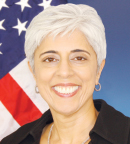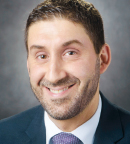Several recent studies have shown an increasingly disturbing trend: the incidence of early-onset cancers—those diagnosed in individuals younger than age 50—is on the rise, and not just in the United States but globally as well. Worldwide, in 2019, there were a reported 1.19 million new cases of cancer among adolescents and young adults (AYAs), aged 15 to 39, and approximately 425,000 deaths.1 Although considered a rare occurrence in the United States, cancer in this age group has risen by nearly 30% over the past 4 decades,2 reaching about 90,000 new cases each year and causing the deaths of more than 9,000 adolescents and young adults.3
And although the 5-year relative survival rate has improved for AYAs in the United States over the past 40 years, increasing from about 70% to approximately 85%, it still lags behind improvements seen for younger and older adult survivors. In children, the 5-year relative survival rate has risen from about 60% to about 85%, and in older adults, it rose from about 50% to about 70%.4
In addition to worse survival outcomes, a cancer diagnosis in this age group comes at a time of developmental transition in their lives and may affect their physical development, mental health, quality of life, educational and vocational achievements, the shift to independence and autonomy, and financial security. Adolescent and young adult cancer survivors may also face the ongoing late effects of their cancer or its treatment, including secondary cancers and heart disease, which may contribute to a shorter lifespan than their peers without a history of cancer, especially for AYA survivors of acute lymphoblastic leukemia and acute myeloid leukemia.5
To raise the national spotlight on the unique challenges AYA cancer survivors endure, this past May, Teen Cancer America (https://teencanceramerica.org), a charity that partners with hospitals to develop specialized facilities and services for AYA cancer survivors, hosted a meeting in Los Angeles with leaders from President Joe Biden’s and First Lady Dr. Jill Biden’s White House Cancer Moonshot (whitehouse.gov/cancermoonshot). Originally launched in 2016 by the Obama-Biden Administration, the Cancer Moonshot’s mission is to accelerate the rate of progress against cancer and to “end cancer as we know it,” with the goal of preventing more than 4 million cancer deaths by 2047 and improving the experience of people touched by cancer.

Arati Prabhakar, PhD

Danielle Carnival, PhD
In attendance at the meeting were Arati Prabhakar, PhD, Director of the White House Office of Science and Technology Policy and Assistant to the President for Science and Technology; and Danielle Carnival, PhD, Deputy Assistant to the President for the Cancer Moonshot and Deputy Director for Health Outcomes, White House Office of Science and Technology Policy; as well as six AYA cancer survivors; and several oncologists and researchers specializing in AYA cancer survivorship.
The meeting was introduced by Teen Cancer America’s Executive Director Simon Davies and moderated by Michael Roth, MD, Associate Professor of Pediatrics and Director of the Childhood Cancer Survivorship Program at The University of Texas MD Anderson Cancer Center, among others. It was divided into four sessions: Diagnosis, Access to Care, and Screening; Targeted Cancer Treatment and Survival Disparities; Survivorship, Supportive Care, and Health-Related Quality of Life; and Recognition and Integration for AYA Survivorship Into the Cancer Moonshot.

Simon Davies

Michael Roth, MD
The ASCO Post talked with Dr. Carnival about her impressions after hearing from AYA cancer survivors, clinicians, and researchers regarding the unique consequences of cancer for this population; how the Cancer Moonshot initiative aims to improve the lives of AYA cancer survivors; and the next steps to integrating AYA survivorship goals into the Cancer Moonshot.
Making an Impact
Please talk about your impressions of the meeting with Teen Cancer America and hearing from the adolescent and young adult cancer survivors about their long-term challenges following a cancer diagnosis.
From the start, as part of the Cancer Moonshot, we have been making sure that the priorities and the focus of what we are doing are based on the lived experience of the people most directly impacted by cancer, including patients, caregivers, clinicians, researchers, and other health-care providers. The visit we had with Teen Cancer America was an important example of the effort to hear firsthand the issues around long-term survivorship for people diagnosed with adult, adolescent, and young adult cancers, including the mental health challenges they face, and how they sometimes fall between the cracks in the medical system.
When you are sitting with patients, talking about the impact that federal policies, research agendas, and investments have on their lives it brings home why we are doing what we are doing and helps to refine what we are focused on and where we hope to make an impact.
Focusing on the Challenges AYAs Face
What did you learn during the meeting that might lead to greater awareness by Cancer Moonshot leaders about the challenges adolescents and young adult cancer survivors face?
I come out of these conversations, especially with young AYA cancer survivors, with a refined focus of our priorities and how we are going to get things done. With this meeting, there were several areas that struck me the most. One, how individual families are navigating the system on their own and trying to find where their child fits into that system. Two, so much of the hope with new treatments is they will have a shorter-term negative impact, especially for people being treated at such young ages, who, hopefully, will have many healthy decades ahead of them. Three, the impact mental health has on these young people.
For example, the story from one of the AYA participants about her mental health struggles gave me such clarity about how cancer pulls AYA survivors out of their lives at a stage when their social system and friends largely define their happiness. When they are lucky enough to come back into their life as cancer survivors, their perspective has changed, and they tend to feel just as isolated, even though they are back into their social settings, and that may be even more challenging.
These three takeaways from the meeting are the issues we are hoping to continue to work on with the community to find ways to improve adolescent and young adult lives.
Improving the Lives of AYA Cancer Survivors
Because of the developmental stages included in the adolescent and young adult age range, a cancer diagnosis and treatment can affect their relationships, education, and employment; long-term financial security; and long-term health. What are the Cancer Moonshot objectives to close the gap in the unmet needs of adolescent and young adult cancer survivors?
Although we did not come out of the meeting with a clear way to solve these issues, I do think it is important to reinforce the two main goals of the reignited Cancer Moonshot. One is a quantifiable goal, which is to decrease the death rate from cancer by at least 50% over the next 25 years, which would prevent 4 million Americans from dying of cancer over that time.
The second goal is to improve the experience of living with and surviving cancer, and that is the one where we have a huge opportunity to make sure we are bringing forward solutions to improve the lives of cancer survivors. As the science continues to move forward, and there are even better outcomes for these folks, we want to make sure the whole person is respected throughout the process and they are able to enjoy many healthy decades.
Setting Priorities
How might the Cancer Moonshot resources be used to improve care and outcomes for adolescents and young adults throughout the cancer care continuum?
There are two goals that are priorities for us right now. One, as part of the State of the Union Address this year, President Biden set a new goal to ensure that navigation services are a covered insurance benefit for cancer patients and survivors. There is growing evidence showing that for cancer prevention, early detection, and survivorship, having a navigator help people make decisions about their treatment options and identify financial needs and psychosocial needs that may not be addressed through general care can impact outcomes.
The other area that will make a huge difference to the cancer community, and has been a focus of the Cancer Moonshot, is the continuing implementation through the federal government oversight, of health information technology to make sure patients have complete access to understandable, digestible versions of their medical records. When you talk about coming out of the oncology care system into long-term survivorship care, having ownership of your medical records and the ability to move them from one place to another will go a long way to improving the overall health of these cancer survivors.
Filling in the Gaps in Survivorship Care
What are the next steps to potentially incorporate adolescent and young adult survivors’ unmet needs into the Cancer Moonshot priorities?
First, I would say the needs and concerns of the AYA cancer community have been incorporated into the Cancer Moonshot from the beginning. There have been programs from the National Cancer Institute in cancer survivorship. We have incorporated cancer survivors and families and patients in conversations from early on because we know the issues are unique to this population.
I did hear from the participants at the Teen Cancer America meeting the three areas I mentioned earlier where there are still gaps that the Cancer Moonshot can help address, including the navigation piece, the long-term ramifications of treatment, and the mental health issues. We are very open to having additional conversations with the community about how to close these gaps, and improve outcomes, which could potentially mean there is more work the federal government needs to do.
The President is asking everyone—government, the private sector, nonprofit organizations, and philanthropies—to come together and bring forward their best ideas. We will continue to highlight the goals outlined in the Cancer Moonshot and to advance the actions that deliver progress in cancer outcomes to meet those goals.
DISCLOSURE: Dr. Carnival reported no conflicts of interest.
REFERENCES
1. Alvarez EM, Force LM, Xu R, et al: The global burden of adolescent and young adult cancer in 2019: A systematic analysis for the Global Burden of Disease Study 2019. Lancet Oncol 23:27-52, 2022.
2. Scott AR, Stoltzfus KC, Tchelebi LT, et al: Trends in cancer incidence in US adolescents and young adults, 1973–2015. JAMA Netw Open 3:e2027738, 2020.
3. Miller KD, Fidler-Benaoudia M, Keegan TH, et al: Cancer statistics for adolescents and young adults, 2020. CA Cancer J Clin 70:443-459, 2020.
4. Coccia PF: Overview of adolescent and young adult oncology. J Oncol Pract 15:235-237, 2019.
5. Berkman AM, Andersen CR, Cuglievan B, et al: Long-term outcomes among adolescent and young adult survivors of acute leukemia: A Surveillance, Epidemiology, and End Results analysis. Cancer Epidemiol Biomarkers Prev 31:1176-1184, 2022.

